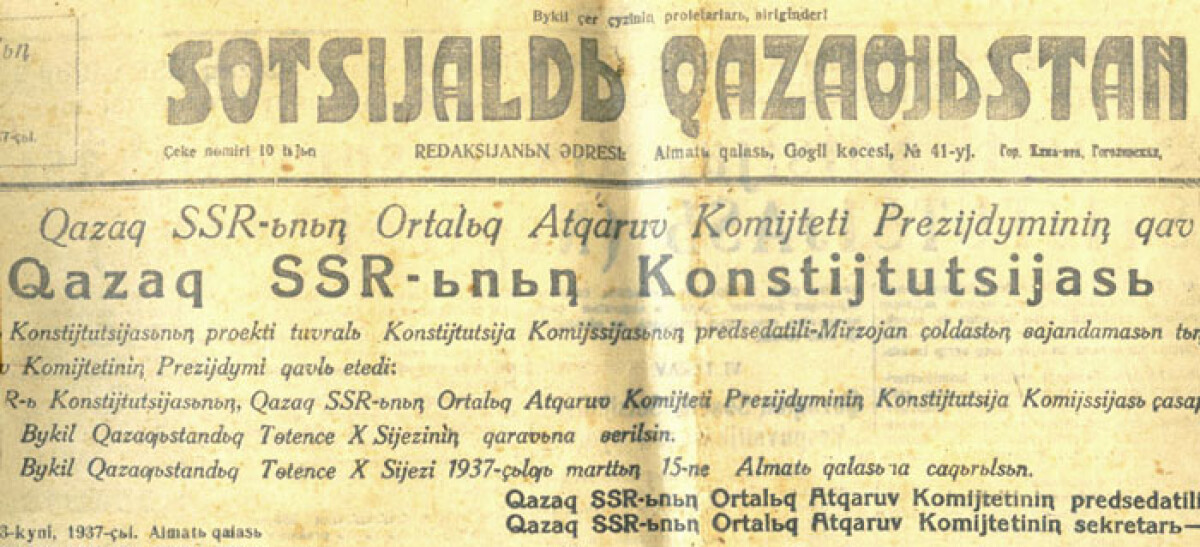
If to deal with the history of the transition of the Kazakh alphabet to the Latin script, one should pay attention not only to the process of the transition and its new edition of the script but also to the reasons of the refusal from Arabic.
Until the revolution the Kazakh people used “tote zhazu”, i.e the Arabic script.
As Bolshevik authority came to its power the policy changed in regards to other nations, who lived on the territory of the former Russian Empire. The new authorities thought it prospective to change the Turkic graphic system to a new single alphabet. It was well said “the alphabet of revolution”.
The widespread Romanization was good not only from a linguistic point of view but also had a political subtext. In opposition to the Russification policy of tsarism, the Soviet government sought to create a new worldview through the Latin alphabet, to change the language picture of the world, with the preservation of the language, but the change in graphics.
Besides there were some nations on the territory of the Soviet Union who had no valid writing system, and as for the Muslims they used an Arabic alphabet that opposed to the Bolshevik ideology as well. The Arabic script was tightly bound to its sacral function and was associated with Koran, religious dogmas that ran against the atheistic view of the Bolsheviks.
In 20s the communists believed in the establishment of socialism and afterwards communism all over the world. The theory of “permanent revolution” had to have transformed in practice and have spread on the other countries. And only then there would have been an urgent need for a common language of the proletarians of all the countries.
Since Cyrillic had been refused as it dealt with the overthrown monarchy, only the Latin alphabet left. But the choice was made in favor of the Latin alphabet not only because the other two were excluded but for its laconicism and convenience. Besides there were some external political reasons: in 1928 Turkey changed its script into the Latin one, being on friendly terms with the Soviet Power.
The Muslims and Buddhists were not the only subjects for Romanization but there was a plan to change Cyrillic to a new script. That project was led by a Russian philologer N.F. Yakovlev. In his view, Russian alphabet separated the countries that preserved the Cyrillic writing system and the peoples of East who switched to the Latin script after the October revolution. Besides Cyrillic was an obstacle to the integration with Western European countries.
The Turkic people also responded positively to the initiative to use the Latin script. That idea could inspire fraternal peoples to unite. In 1923 the movement in favor of changing to the Latin script started to increase.
December 20, 1928 the Kazakh Central Executive committee adopted the bylaw on the change of the Kazakh alphabet to the Latin script. “Yanalif” (Zhanalip) alphabet was purposely developed on the basis of the Latin characters. Publicistic writing began to be printed on the Latin characters for children to learn fast the new form of writing, schools began to use the Latin script. This script solved the problem of the absence of some sounds expressed by means of a diacritic, i.e. there were created new unique symbols which had no parallel with the Latin script.
Nowadays it is not so easy to adopt this script, as the symbols are of the unique character that cannot be found on a common keyboard. Other symbols have not been entered into the universal common international standard of characters encoding – Unicod.
But the Kazakh language based on the Latin script was not of a long use. Soon the government drew a conclusion that the idea of the transition to the Latin script was not of much success, after all the relations with Turkey, who set the example, became worse. In 1940 the Latin script was changed to Cyrillic.
After the collapse of the USSR the transition to the Latin script became the topic of a hot importance for the independent republics. Kazakhstan can draw on the experience of the post-Soviet countries, to which belong the Turkic world, such as Uzbekistan, Turkmenistan, and Azerbaijan.
